The 2015 Goldman Environmental Prize Winners
Air Date: Week of April 24, 2015
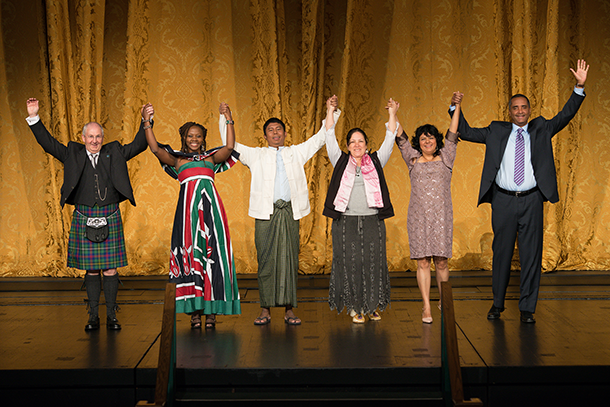
This year’s Goldman Environmental Prize recipients have stopped construction of two major dams, shut down a lead-emitting smelter, established Marine Protected Areas, and thwarted a gold and copper mine. From left: Howard Wood of Scotland, Phyllis Omido of Kenya, Myint Zaw of Honduras, Marilyn Baptiste of Canada, Berta Cáceres of Honduras, and Jean Wiener of Haiti. (Photo: Goldman Environmental Prize)
Every year the winners of the Goldman Environmental Prize are announced just in time for Earth Day, and this year each received $175,000. For the past quarter century the prize has celebrated the efforts of individuals from each of the five most populated continents plus the island nations to protect their communities’ natural resources. Host Steve Curwood speaks with three of this year’s recipients: Howard Wood from Scotland and Jean Wiener from Haiti, who both fought to protect their seas and coasts, and Canadian Marilyn Baptiste who opposed a planned mine on tribal land.
Transcript
CURWOOD: Every year the winners of the Goldman Environmental Prize are announced just in time for Earth Day, and this year each received $175,000. For the past quarter century, the prize has celebrated the efforts of individuals from each of the five most populated continents plus the island nations to protect their communities’ natural resources. This year’s winners include a Kenyan woman who shut down a lead-emitting smelter, an indigenous Honduran who championed environmental justice for her people, and an activist who halted construction of a mega-dam in Myanmar. We spoke with the other three of those who won this year: Marie Baptiste, who battled a planned mine on her tribal land, and Jean Wiener and Howard Wood who fought to protect marine areas off their coasts. For all of them, winning the prize was a huge surprise. Here’s Jean Wiener from Haiti.
WEINER: I'd known about the Goldman prize for probably over a dozen years, but as with certainly all of our other co-winners, never thought that it would come to me.
BAPTISTE: I believe I heard about it in the fall when I was called. I've never known about this Goldman prize until then so, yes, it was very much a shock.
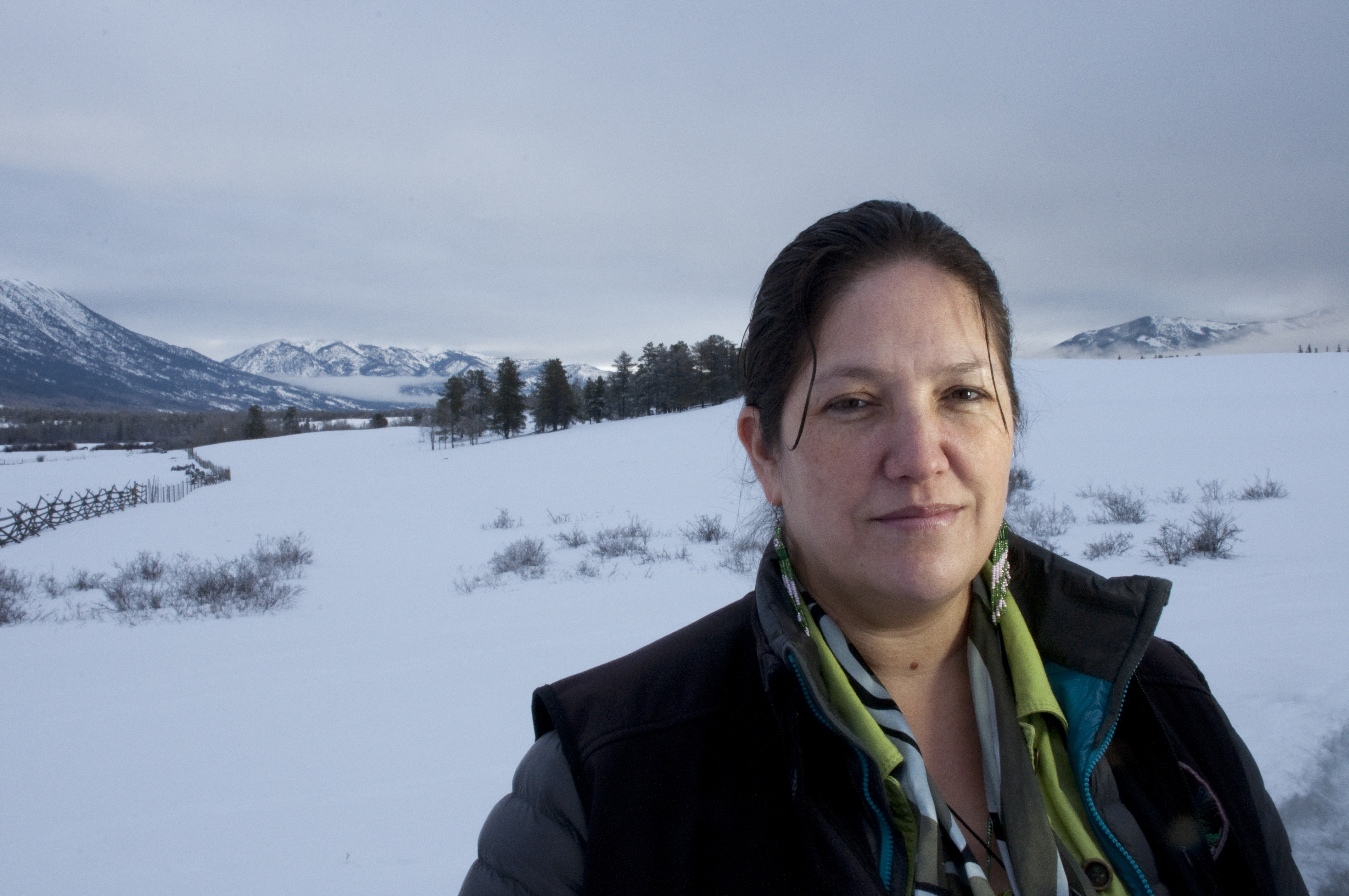
Marilyn Baptiste, 2015 Goldman Environmental Prize winner for North America, led the Xeni Gwet’in community in defeating one of the largest proposed gold and copper mines in British Columbia that would have destroyed Fish Lake, a source of spiritual identity and livelihood for the Xeni Gwet’in. (Photo: Goldman Environmental Prize)
WOOD: Well, when I was phoned up in late autumn, I thought it was a hoax. It took me a few days today to believe it. I certainly didn't think they were going to come to me.
CURWOOD: So, we'll start now with diver Howard Wood of Scotland who responded to the damaging commercial fishing practices occurring along the coast of the Isle of Arran by helping establish Scotland's first community-developed Marine Protected Area. You did a lot of diving as an adolescent. What's changed over the years?
WOOD: Well, I was brought up as a teenager on the Isle of Arran, and as a teenager learned to dive. And when I was diving in the 1970s, to me the seas were full of life, and that was really important because it was how we fed ourselves, but I just loved diving because it was like exploring areas that most of the people on the island couldn't see. But I gradually became aware over the 10, 15 years that our seas were declining and they were declining rapidly due to overfishing and poor fishing practices.
CURWOOD: What convinced you that the fishery needed protecting and how did you work to protect it?
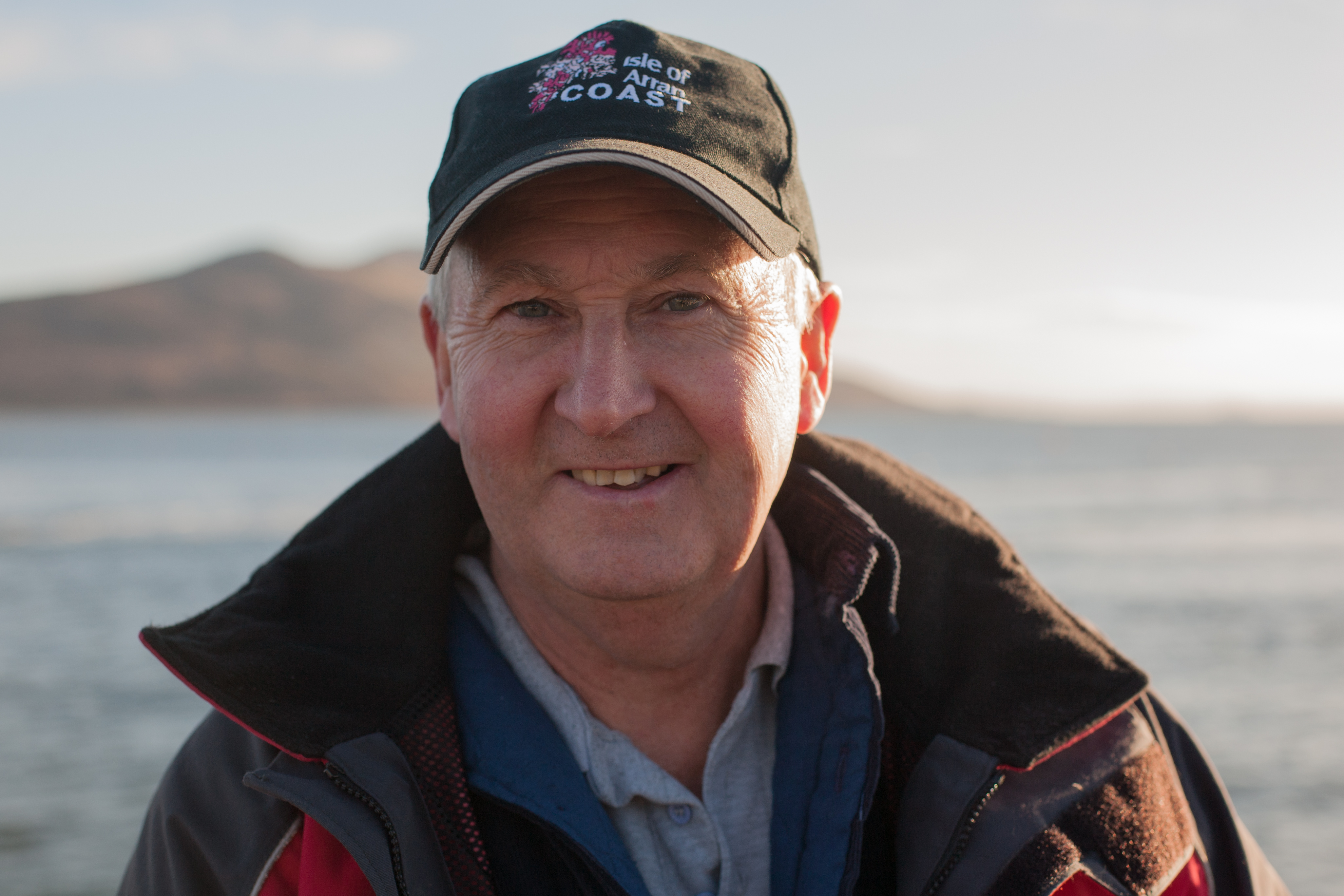
Howard Wood, 2015 Goldman Environmental Prize winner for Europe, spearheaded a campaign that established the first community-developed Marine Protected Area in Scotland, giving citizens a voice in a debate that has been dominated by the commercial fishing industry. (Photo: Goldman Environmental Prize)
WOOD: Well, initially we didn't realize what we could really do about it but the co-founder of our organization called Coast Community of Arran Seabed Trust, my good friend Don MacNeish, returned from New Zealand. And he'd met Goldman winner Dr. Bill Ballantine who had set up the world's first no-take zone in 1973. So myself and Don started in the early 1990s to meet with government officials and try and move this forward. It was very, very difficult and it was only once we spread the word and built community support, that the politicians really started to take note. We have two marine protected areas now. We have the original "no-take" zone, which is called the Lamlash Bay Community Marine Reserve. It is quite a small area. It is only one square mile that has been there since 2008 and the results from the research are very, very, exciting and since last summer we now have the South Arran Marine Protected area, which is 100 times the size.
CURWOOD: You say the first protected area was only a square-mile but it had a tremendous impact. Tell me about the results that you got.
WOOD: Over the first six years, the biodiversity doubled. The species attached to the seabed, the hydroids, the sponges, the macro-algaes, the seaweeds, the complexity of the seabed increased. It was always a problem convincing fisherman...they thought marine protected areas would only work in tropical waters, so we trialed this no-take experiment in a temperate regions and it's been incredibly successful.
CURWOOD: Now as I understand it this marine protected area is Scotland's first and only to be developed by the community itself. How is the Arran community's stake in its protected area influencing its management?
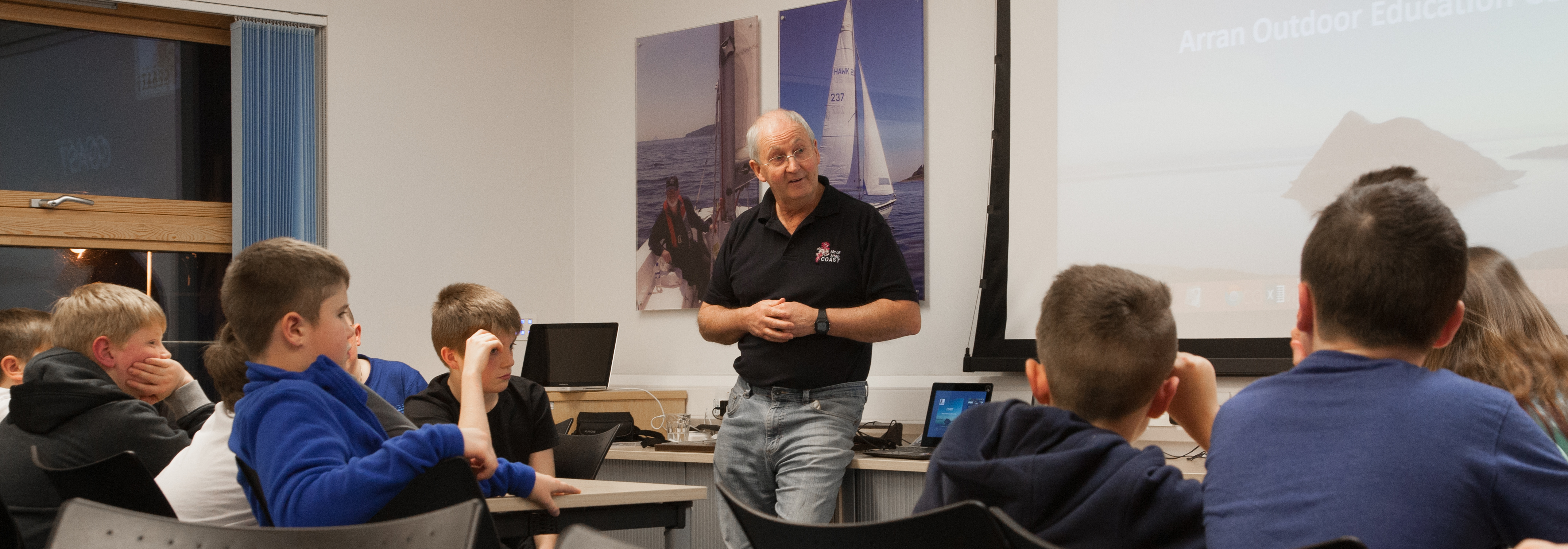
Wood talks to students about the importance of sustainable marine management at a school in Arran, Scotland. (Photo: Goldman Environmental Prize)
WOOD: Well, our organization we don't have the full say over the management. We are in partnership with government organizations and parts of the fishing industry and over the last six-and-a-half years that has been very, very difficult because of the way the Scottish government manages our seas; unfortunately they tend to just listen to the big fishing industry, and if they do not like something happening, they hold a veto. We're still struggling to change so that communities can have a real say in the management but at present the government’s proposals, they're not acceptable to the local community.
CURWOOD: Well, what has been the response of the commercial fishing industry?
WOOD: We have a mixed response. We have had great support from the smaller guys, the shellfish divers, and the creel fisherman, and we've had support from trawling and the scallop dredging industry but that evaporated on the designation of the "no-take" zone. They looked on this as the thin end of the wedge, and that if this would continue, if other communities would have a say in the waters, this was very dangerous to their position of being so powerful with the government.
CURWOOD: I want to turn now to Jean Weiner who is working in Haiti to help people recognize the value of their threatened marine environment. Jean, I understand you helped designate Haiti's first-ever marine protected areas?
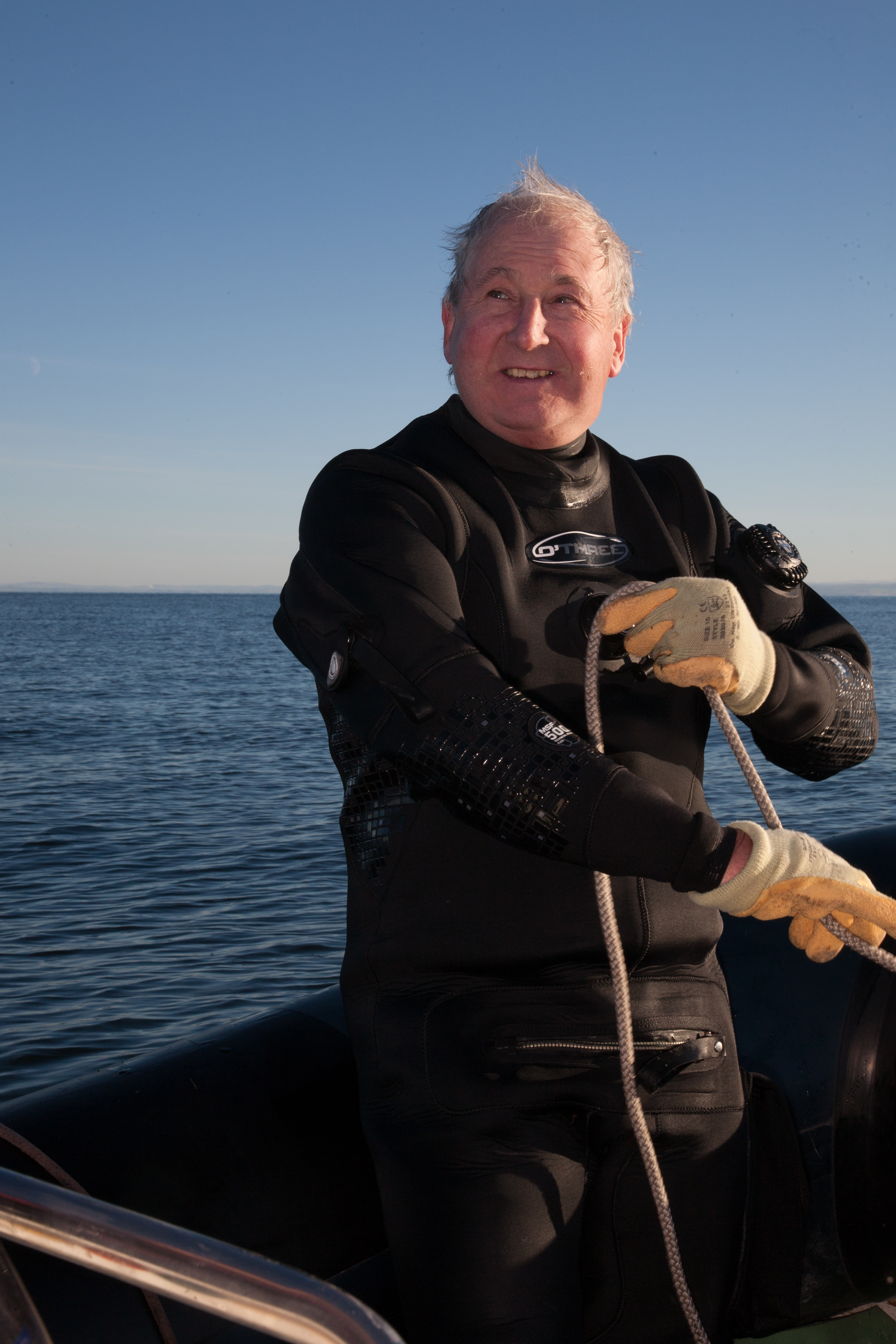
Diving has been a long-time hobby and passion for Wood, who dove in the waters off the Isle of Arran as a teenager. (Photo: Goldman Environmental Prize)
WEINER: Well, in a sense, yes, my organization had undertaken the first surveys for sites, which we thought would be of great importance to preserve not only for their beauty, but for their natural ecosystems and this started back in 2000. So it was a lot of work by a lot of people. We certainly couldn't have done it alone, we needed the government support, we needed the support of the communities. Haiti was the only country in the entire Caribbean, which did not have a marine protected area and we have one of the longest coastlines in the Caribbean and to me at least that was just absurd.
CURWOOD: Jean, take us back to your childhood in Haiti please. Tell us how that his influence how you look at things such as community organizing in marine protected areas.
WEINER: You know, born and growing up in Haiti and spending most of my weekends at the beach with my parents, as I like to say, I was one of those kids who don't had to be yelled at to get out of the water when it was time to go home. So it was snorkeling and being out there with friends and talking to some of the fisherman and seeing firsthand the beauty of the coral reefs, the amount of fish that were in the water with us, and then leaving, going off to college in the United States, returning and seeing already in that short amount of time a serious deterioration in the first of all, what the fishermen...my old fisherman friends were telling me about how bad the fishing had become, seeing pollution, debris, trash, all along the shores, floating in the water and seeing that there was also a lot more destruction of the coastal marine area especially in terms of the degradation of coral reefs and the destruction of mangroves for charcoal production and fuel-wood. So decided to start a Foundation for the Protection of Marine Biodiversity in 1992 and it's just really taken off from there.
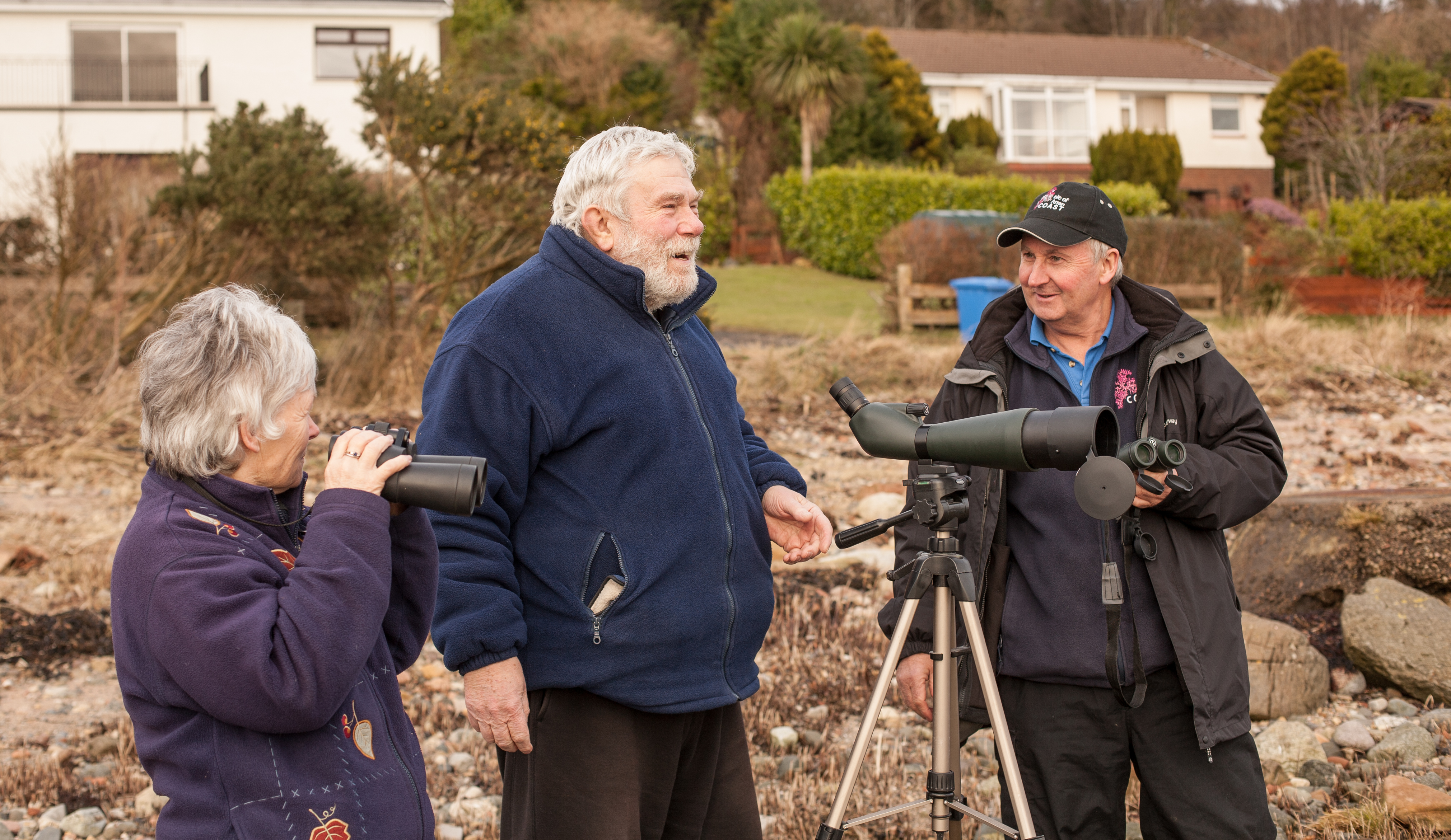
Howard Wood joins locals monitoring for illegal activity in Lamlash Bay’s No Take Zone. In 1995, Wood co-founded COAST, the Community of Arran Seabed Trust, which subsequently led the campaign to establish Lamlash Bay’s No Take Zone. (Photo: Goldman Environmental Prize)
CURWOOD: Jean, Haiti is one of the poorest countries on the planet. I imagine folks there were concerned about how your ideas about marine protected areas would affect their livelihoods. How were you able to explain to people that this would improve the lives economically as well as ecologically?
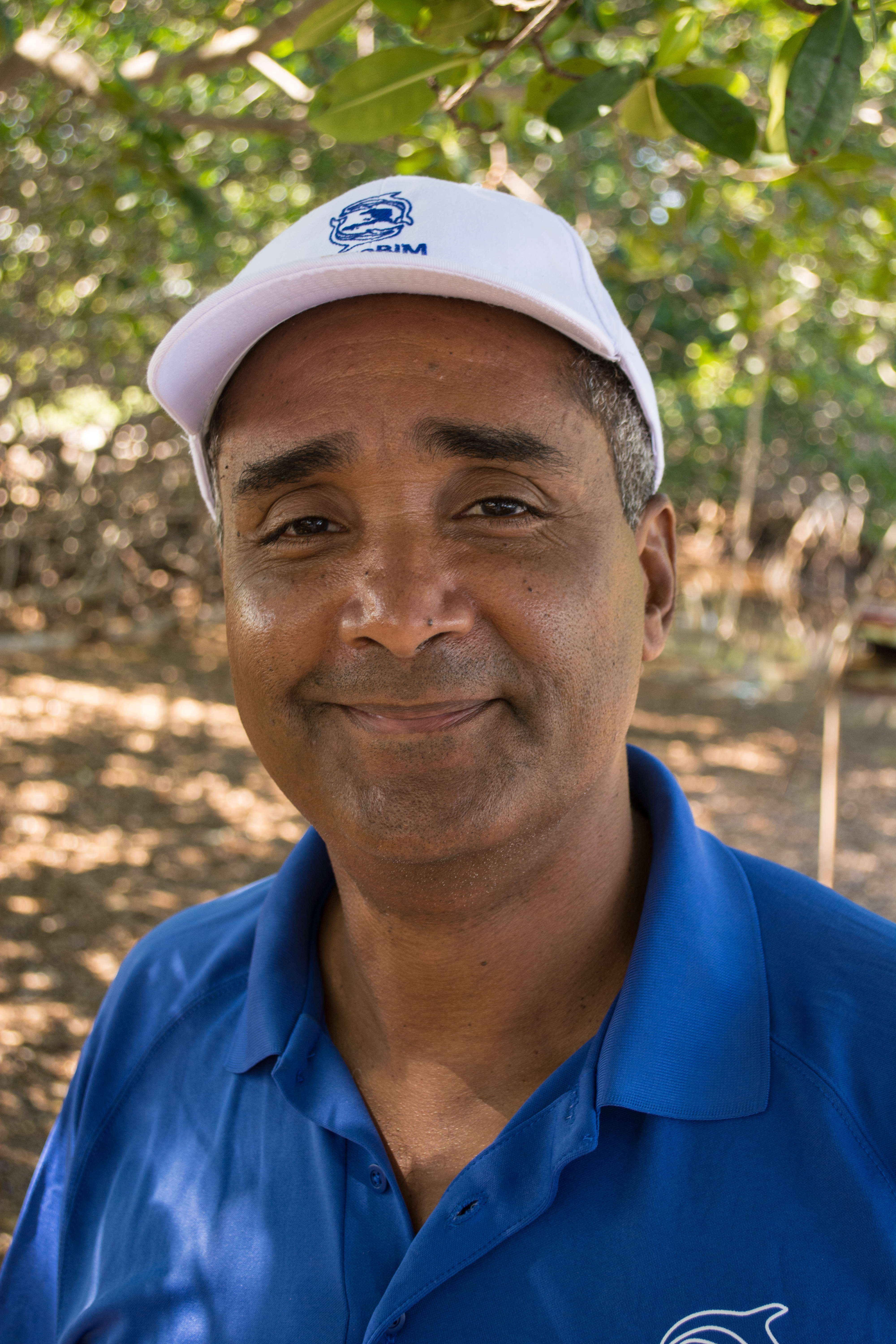
Jean Wiener, 2015 Goldman Environmental Prize winner for Islands and Island Nations, led community efforts to establish Haiti’s first Marine Protected Areas. (Photo: Goldman Environmental Prize)
WEINER: Well, trust me. We're still explaining. There are certain sectors of course who don't believe what we're saying in terms of trying to protect these areas and we have actually started to move away a bit more from marine protected areas and meaning to call them more marine managed areas, because in countries such as Haiti it would be impossible to make the entire area a "no-take" zone because there are so many families reliant upon these resources. So a larger area marine managed area but within that larger area there would be certain areas, which would be “no-take” zones, and areas for fishing and areas for tourism and that type of thing so there would be internal zoning, but convincing the local communities, it's an ongoing process. They know that things can't continue the way they are; fishermen have been going out these days for, they tell me, for two weeks and can't find enough food for half a day whereas they used to go out for half a day and find enough food for two weeks. They've realized that their livelihoods are in serious jeopardy and in certain communities they're actually seeking us out.
CURWOOD: Thanks, Jean. Let's turn now to Marilyn Baptiste, a First Nations tribal leader who defeated three attempts by a formidable mining company to construct British Columbia's largest gold and copper mine. Marilyn, what drove you to stand up against Taseko Mines Limited and the industry friendly BC regional government?
BAPTISTE: It is our duty and responsibility first and foremost to protect our environment and protect Mother Earth who provides for us and to protect our future generations yet unborn. I've learned this basically all my life. My late dad was chief since before I was born, so I've been born into it. As indigenous peoples, that's a part of our duty and responsibility.
CURWOOD: The company that wants to put in this mine calls it “The Prosperity Mine”. Your views on that title and what it would mean?
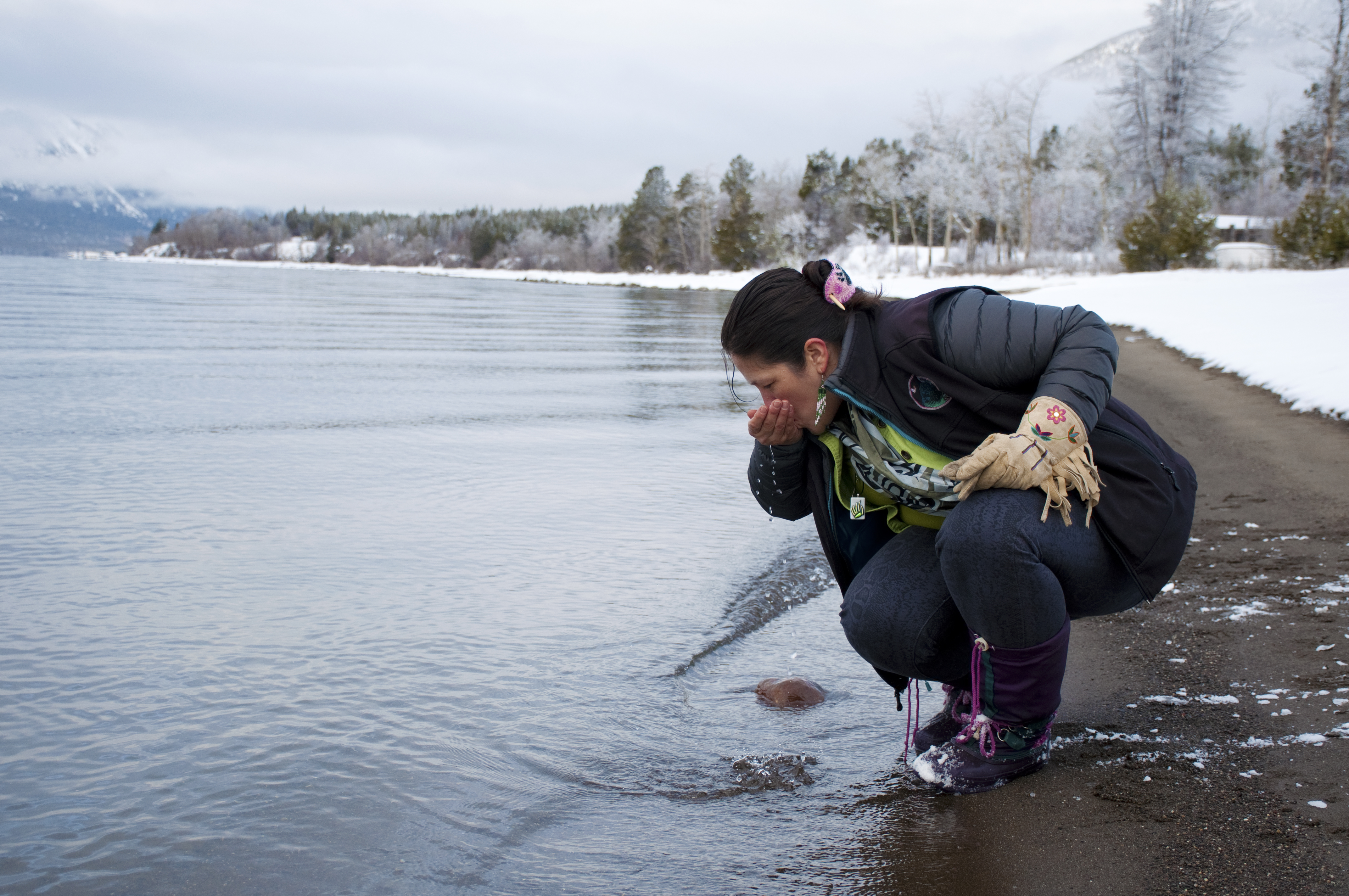
Marilyn Baptiste takes a drink out of Chilko Lake, the Tsilhqot’in’s main watershed in the heart of Nemiah Valley, British Columbia, where Xeni Gwet’in territory became ground zero in Taseko Mines Limited (TML)’s long quest to build a massive open-pit gold and copper mine. (Photo: Goldman Environmental Prize)
BAPTISTE: What it would really mean is a destruction of our territory, the destruction of the environment, the wetlands, our wild rainbow trout as well as our wild salmon in the Taseko system, our grizzly bear, our hunting grounds, moose and deer, our gathering grounds for berries and medicines, the land for which we teach our children where I've been taught, our culture, it would be the destruction of who we are, it would be also the destruction of our future generations.
CURWOOD: So how did you organize your community to engage with the Canadian Environmental Assessment Agency on the environmental review of this mine proposal?
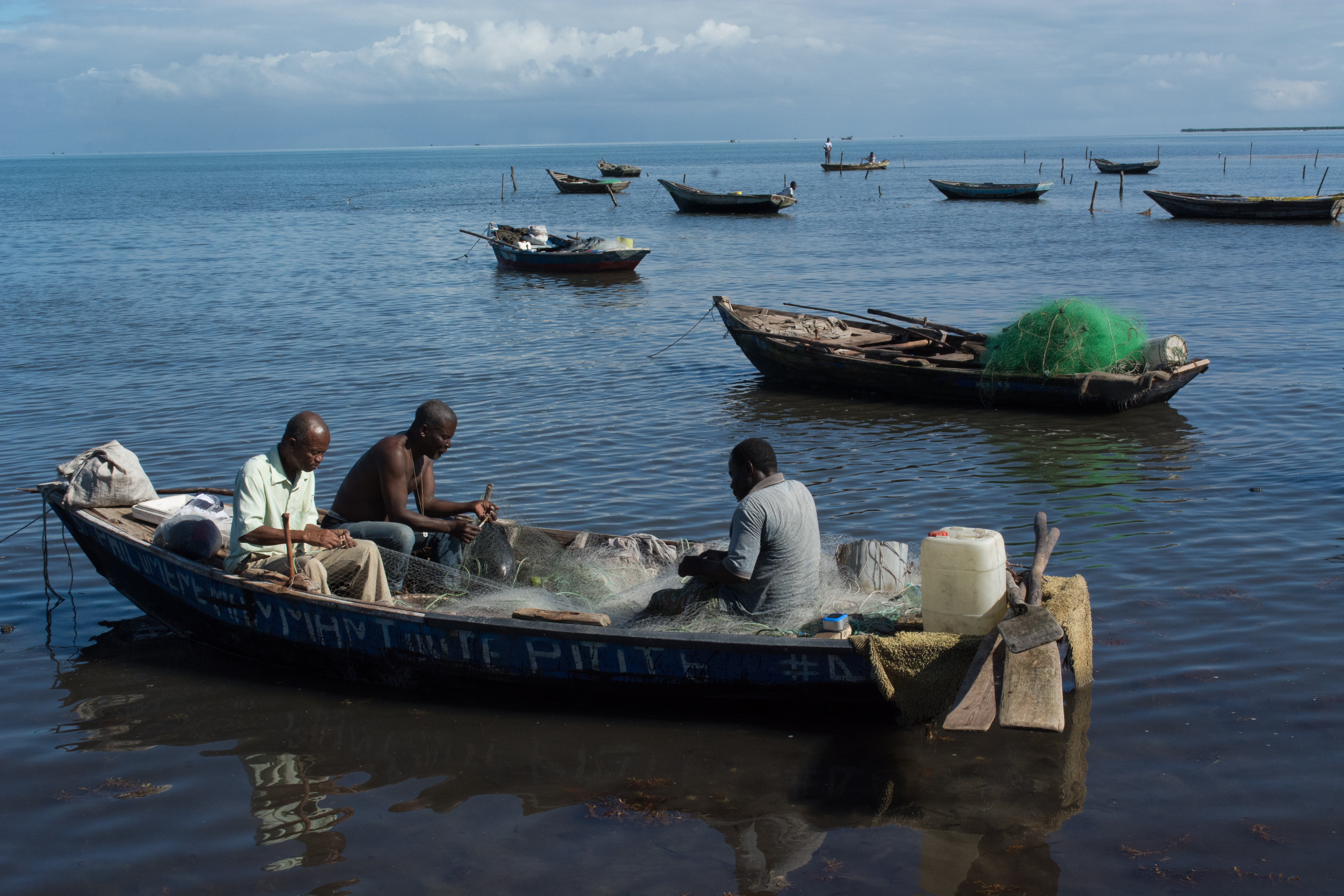
Haitian waters are so overfished that fishermen use nets with holes as small as 3/8” to catch whatever they can to feed their families. (Photo: Goldman Environmental Prize)
BAPTISTE: A lot of it was bringing in people who were in the fight to protect their land. Anne Marie Sam is a co-founder of the First Nations Women Advocating Responsible Mining. She came to our community with Amy Crook and presented to our people how they were putting their information together for an environmental assessment in their territory north of us. Our people really appreciated that insight and that review and their direction from our elders and our people at that time was to work through the process as best we could, to network and work with other people such as Anne Marie Sam.
CURWOOD: I gather that when the Europeans settled that part of Canada at your nation never signed a treaty, that it's still your land.
BAPTISTE: That is correct, we have not gone into treaty and our nation has never intended on selling our territory and that is not a part of our duty. BC is indigenous lands and BC is not for sale.
CURWOOD: So what does the Supreme Court decision mean in terms of the land claims there?
BAPTISTE: That is very, very important to all indigenous peoples. That means that the Supreme Court of Canada has recognized title to a large portion of territory, 1,700 square kilometers. On the other hand, we still have to work through how this is going to develop with the current governments.
CURWOOD: This next question is for all of you. This kind of work is loaded with some pretty intense challenges, but what gave you the courage to go on in those darkest hours? Howard?
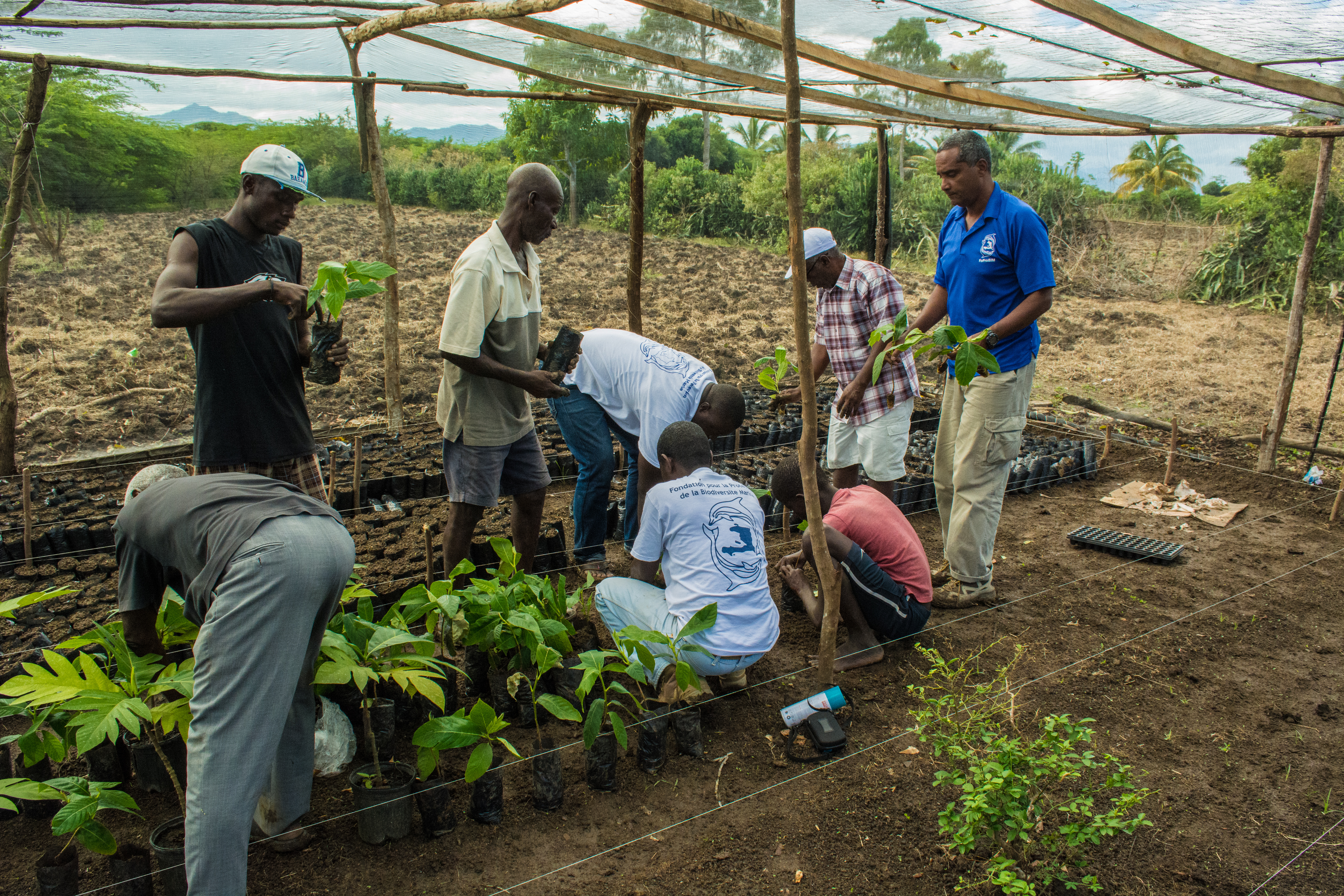
Jean Wiener and FoProBiM staff show residents how to plant breadfruit tree seedlings at a nursery in Caracol, Haiti. FoProBiM, founded by Wiener in 1992, creates small-scale enterprises such as tree nurseries and beekeeping so that Haitians can have promising livelihoods without relying on fishing and mangrove harvesting. (Photo: Goldman Environmental Prize)
WOOD: It slowly became more than just environmental. It became more of a social justice matter that you know myself and my colleagues and then people on the island, we just knew what was happening was not right and I received this award, but I probably received this award because I'm the most stubborn and I would not give in.
CURWOOD: Jean?
WEINER: In Haiti, the problems that everyone faces is in your face all day long, all year long and especially in the areas where I love to be the most, out in the coastal marine areas. I couldn't just sit back and do nothing. There is no doubt that you will be discouraged often, but you have to keep on going.
CURWOOD: How about you, Marilyn?
BAPTISTE: Well, I just have to add simply that it is very important to stand up for what you believe in and you're not here for yourself, you're here for your many generations forward and that's what we are impacting, that's what we destroying if we do not make that stand and do something to help out.
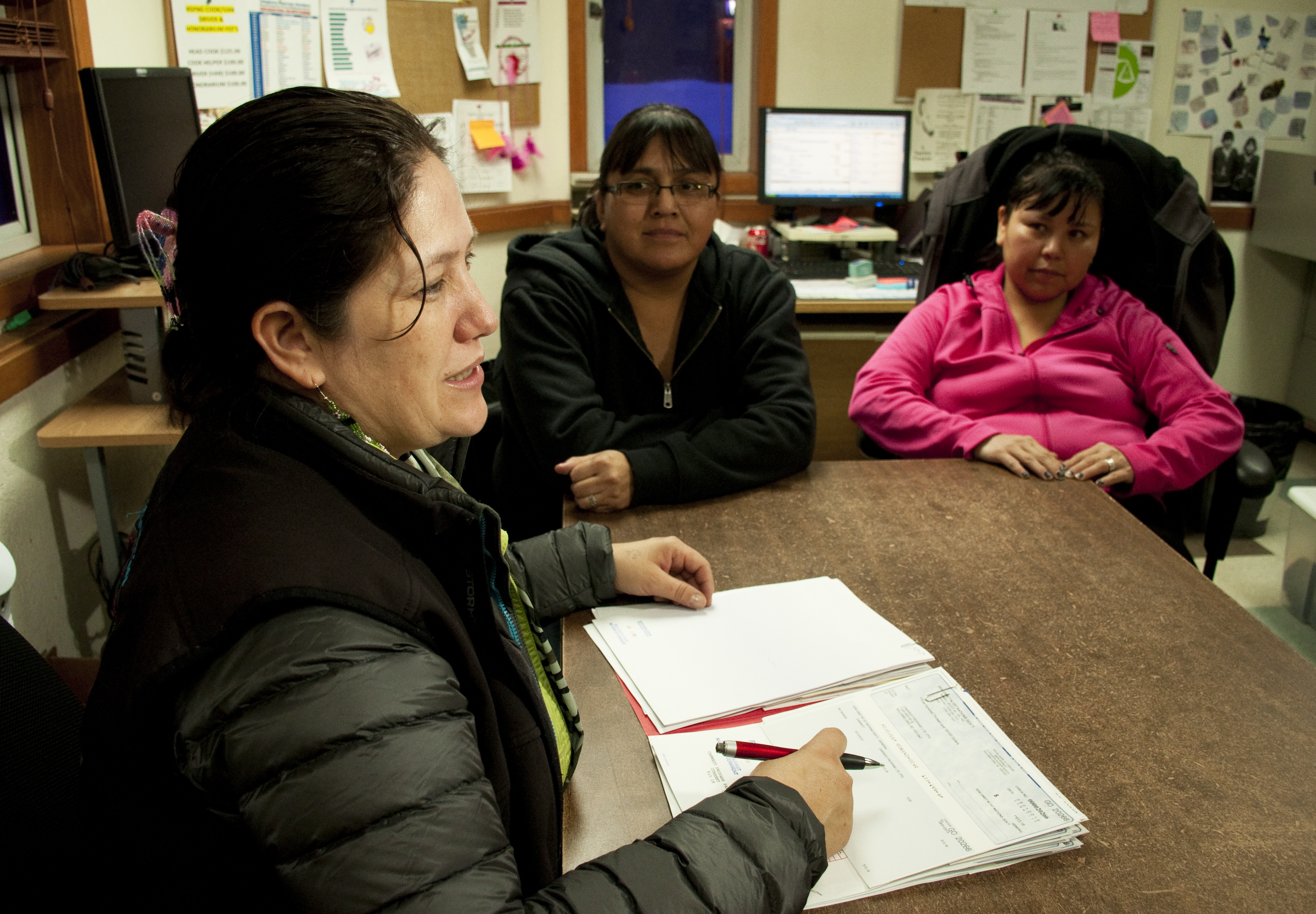
Marilyn Baptiste with her colleagues Pam Quilt and Brenda Lulua at the Xeni Gwet’in Government office. Baptiste co-founded First Nations Women Advocating Responsible Mining (FNWARM), in the thick of TML’s relentless pursuit of the Prosperity Mine project. (Photo: Goldman Environmental Prize)
CURWOOD: Marilyn Baptiste, Jean Weiner and Howard Wood, are three of this year’s six recipients of the Goldman Environmental Prize which honors individuals struggling to win environmental victories against considerable odds. Thanks to all of you for speaking with us today.
WEINER: Thank you.
WOOD: Thank you. It's been a pleasure.
BAPTISTE: Thank you.
Links
Community of Arran Seabed Trust (COAST)
Fondation pour la Protection de la Biodiversite Marine (FoProBiM)
Living on Earth wants to hear from you!
Living on Earth
62 Calef Highway, Suite 212
Lee, NH 03861
Telephone: 617-287-4121
E-mail: comments@loe.org
Newsletter [Click here]
Donate to Living on Earth!
Living on Earth is an independent media program and relies entirely on contributions from listeners and institutions supporting public service. Please donate now to preserve an independent environmental voice.
NewsletterLiving on Earth offers a weekly delivery of the show's rundown to your mailbox. Sign up for our newsletter today!
 Sailors For The Sea: Be the change you want to sea.
Sailors For The Sea: Be the change you want to sea.
 The Grantham Foundation for the Protection of the Environment: Committed to protecting and improving the health of the global environment.
The Grantham Foundation for the Protection of the Environment: Committed to protecting and improving the health of the global environment.
 Contribute to Living on Earth and receive, as our gift to you, an archival print of one of Mark Seth Lender's extraordinary wildlife photographs. Follow the link to see Mark's current collection of photographs.
Contribute to Living on Earth and receive, as our gift to you, an archival print of one of Mark Seth Lender's extraordinary wildlife photographs. Follow the link to see Mark's current collection of photographs.
 Buy a signed copy of Mark Seth Lender's book Smeagull the Seagull & support Living on Earth
Buy a signed copy of Mark Seth Lender's book Smeagull the Seagull & support Living on Earth

